The Museum of Turkish and Islamic Arts is Ottoman palace on the western edge of the Hippodrome was built in 1524 for İbrahim Paşa, childhood friend, brother-in-law and grand vizier of Süleyman the Magnificent. It’s now home to a magnificent collection of artefacts, including exquisite examples of calligraphy and a collection of antique carpets that is generally held to be the best in the world.
Turkish and Islamic Arts Museum’s exhibits date from the 8th and 9th centuries up to the 19th century. Highlights include the superb calligraphy exhibits, with müknames (scrolls outlining an imperial decree) featuring the sultan’s tuğra (monogram). Look out for the exquisite Iranian book binding from the Safavid period (1501–1786). And whatever you do, don’t miss the extraordinary collection of carpets displayed in the divanhane (ceremonial hall) it includes Holbein, Lotto, Konya, Uşhak, Iran and Caucasia examples.
The lower floor of the museum houses ethnographic exhibits. Labels are in Turkish and English throughout.
The Museum of Turkish and İslamic Arts contains Turkish and İslamic Arts all together and is known as the last museum to open in the Otoman Period.The foundation of the museum was commissioned as a result of continuous steal of artworks from various trust bulidings, mosques, masjids, takas and sbrines from all over the country.Studies under a commission chaired by the director of Imperial Museum Mr. Osman Hamdi was completed in 1913 and the Museum was opened to publick as “The Museum of Muslim Endowments” (Evkaf-ı İslâmiye Müzesi) in imaret building within the complex of Süleymaniye Mosque, one of the masterworks of Mimar Sinan, the Chief Architect.
Fallowing the promulgation of the Republic the museum was lent the name of The Museum of Turkish and Islamic Arts and was transferred Ibrahim Pahsa Palace in 1983 where it stands today. The Palace that was given to then Grand Vizler Ibrahim Pahsa by Sultan Süleyman the Magnificent was amongst the chief structures of civil architecture in 16thcentury.
Rose on the stages of ex-hippodrome in Horse Square (At Meydanı) the famous historical square of Istanbul, the Palace in contrast to the Ottoman architectural tradition where all structures were built in wood was built in stone. Although it is identified precisely when and by whom the Palace was built, the alterations made before the great circumcision ceremony and the new entrance gate was known to be built by Sinan the Architect.
The Palace functioned as a palace of grand vizier. The just ceremony at the palace was arranged for the celebration of Ibrahim Pahsa’s wedding with Sultan’s sister Hatice Sultan in 1524. Sultan Süleyman the Magnificent watched the circumcision ceremonies of his princes Mustafa, Mehmet and Selim in 1530 from his lodge (mahfil) in Ibrahim Pahsa Palace. The ceremonial hall and the Assembly Hall (Divanhane) of the Palace was refurbished between the years 1966 and 1983 and obtained today’s condition. Various historical sources describe Ibrahim Pahsa Palace the largest amongst viziers’ palaces an even more marvellous than from Topkapı Palace.
While here, be sure to enjoy an expertly prepared Turkish coffee at Müzenin Kahvesi in the courtyard.
| Address | : | At Meydanı Sok. No:46 İbrahim Paşa Sarayı Sultanahmet, Eminönü |
| Web Site | : | www.tiem.gov.tr |
| : | turkislam@muze.gov.tr – turkislameserlerimuz@kultur.gov.tr | |
| Phone | : | (212) 518 18 05 |
| Fax | : | (212) 518 18 07 |
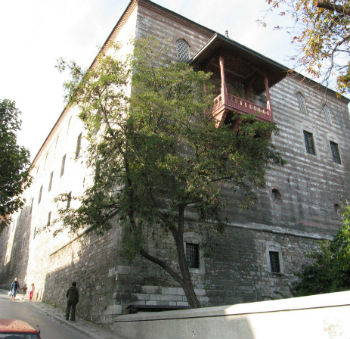
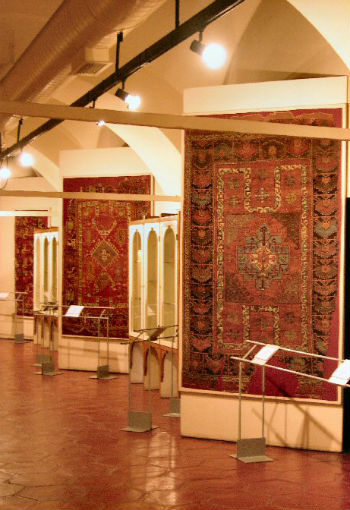
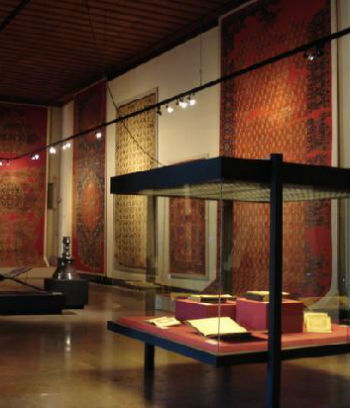
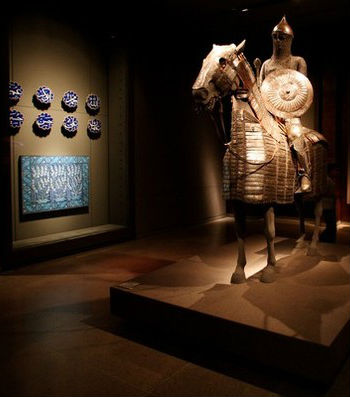
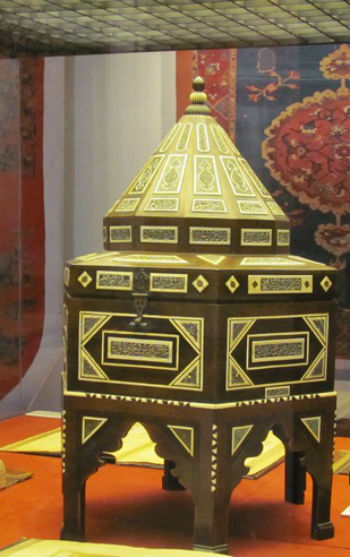


The main things that interested me in this museum were the calligraphy, the writing instruments, the manuscripts and the book bindings – I'm a librarian, sorry. The artistic development of the Ottoman Empire did not enthral me, although there were some very nice rugs on display. The ethnographic museum gives an idea of the range of cultures.
If you want to get to know a city, you should first start from the museums. Feel the perception of people, get an idea about how they lived, their culture etc. This one is different from other museums. After the visit of the museum, you should definitely sit in the garden, have turkish coffee and watch, blue mosque.
This is better than the title makes it sound. A spectaculr display of some absolutely wonderful pottery, woodwork, carpets and even dioramas of various stages of turkish life all make for at least half a day in this museum.
The museum is right in the center of town and has wonderful artifacts and a nice cool cafe under the trees. The GEM in the middle of it is the building in the center courtyard-it looks like a bright tile jewel box inside and houses a small perfect collection of Turkish items DO NOT MISS !
A stunning museum situated on the Hippodrome directly across from the Blue Mosque. Entrance is included in the Museum Pass but it is not expensive. Put this on your 'Must See" list. On the first level there is a really interesting photographic display of nomadic people and how they live.
Somehow, this museum gets lost amidst in the shadow of the Blue Mosque, but it's definitely worth the visit.
This museum has a moderately sized collection of islamic antiquities and arts, a good display of oriental carpets, and an interesting section about traditional Turkish homes of various types.
The museum is very well-designed and comfortable. It's in Ibrahim Pasha's old palace (before he was murdered by the Sultan) so the museum itself is of historical interest. There is a nice selection of Turkish carpets along with Qur'ans and other artifacts.
This Turkish and Islamic Art museum has a very nice archeological artifacts.
There are better ways to spend your day in Istanbul. This museum is a bunch of old torn carpets and bad mannequins dressed up. I kept thinking we were missing a section of it, but couldn't find anything else.